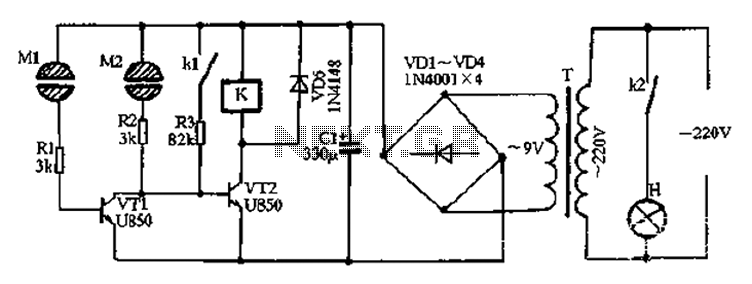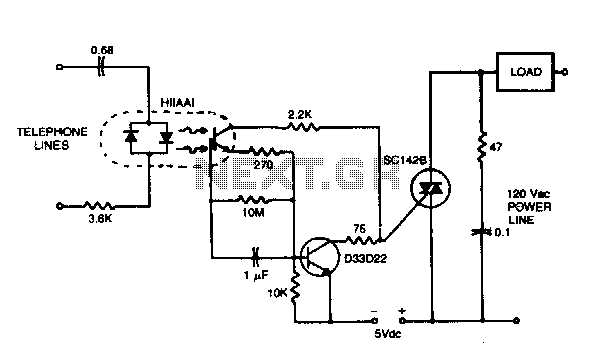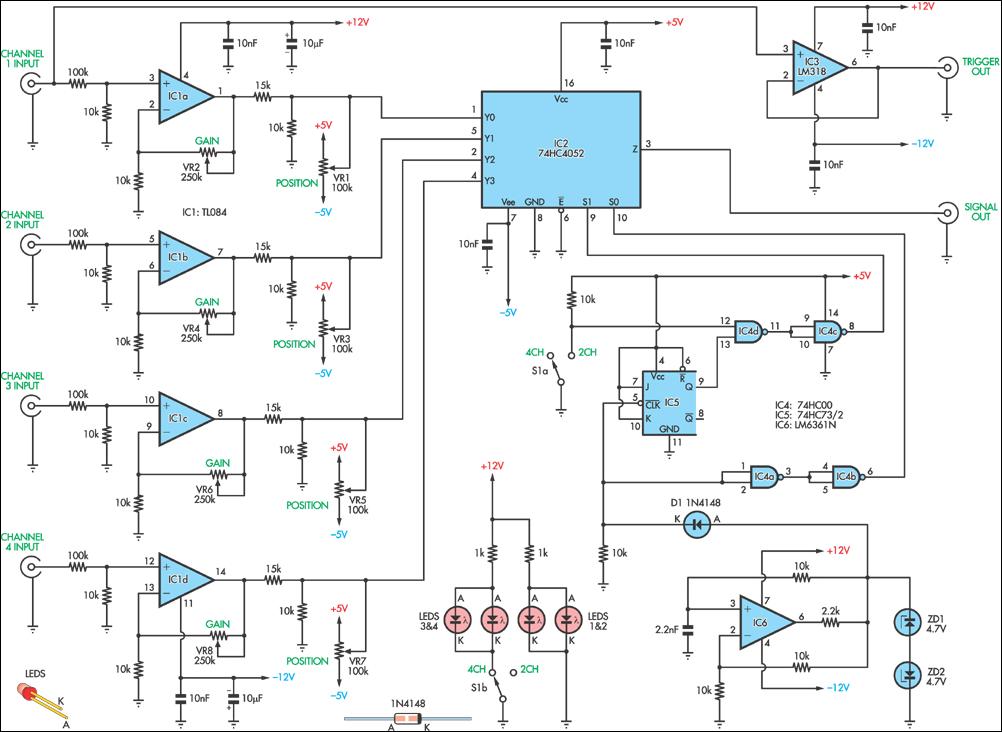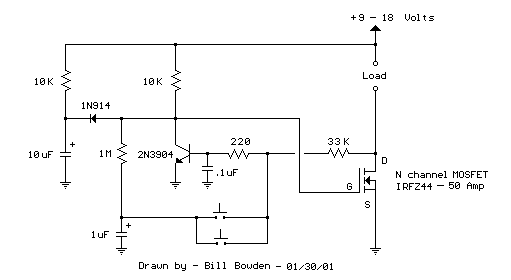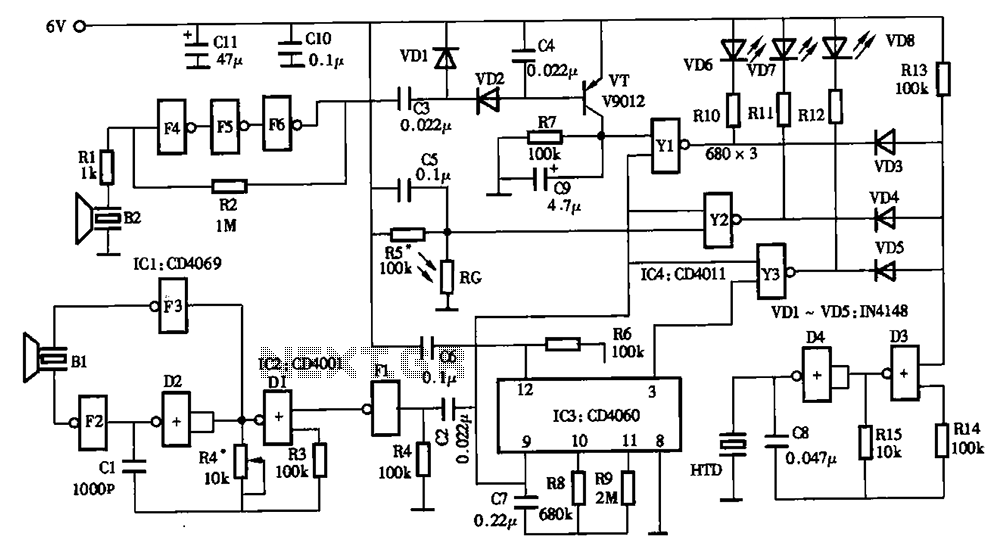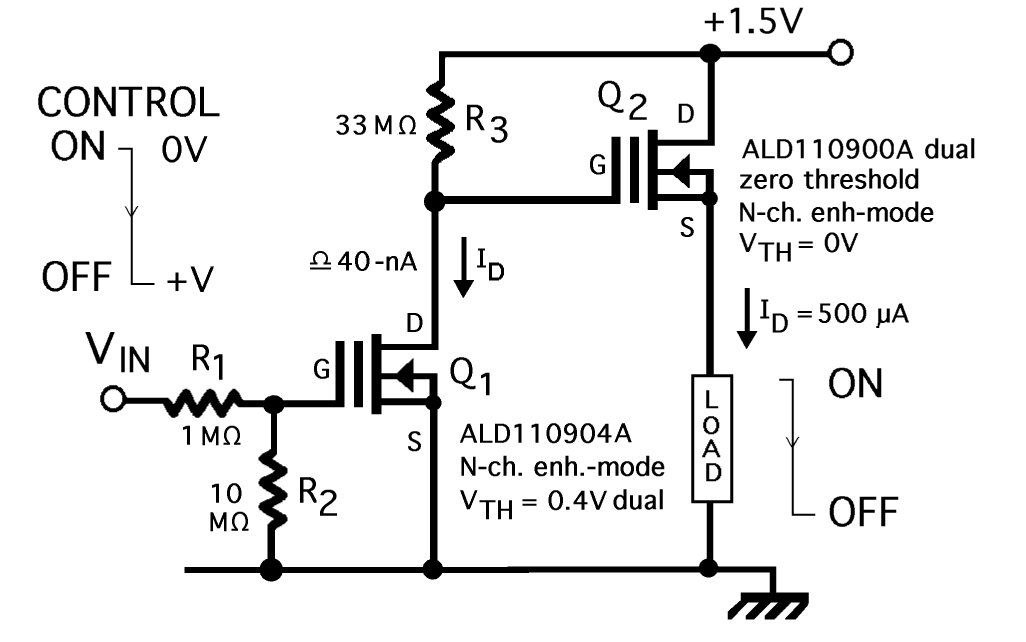
dual-trace scope switch
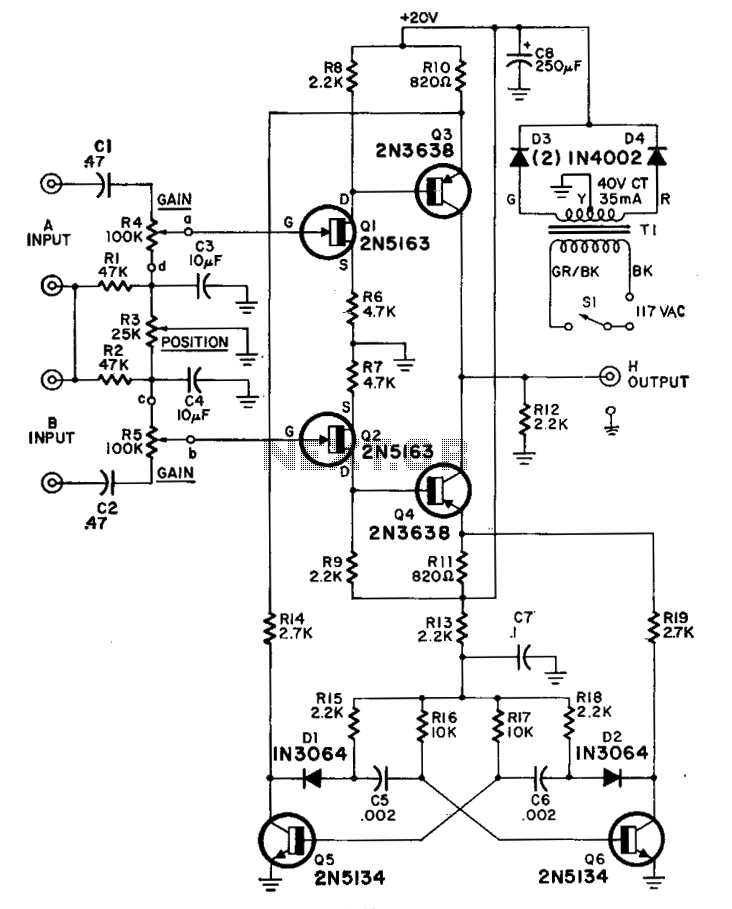
The switcher output connects to the single vertical input of the oscilloscope, while a sync line from one of the inputs is routed to the oscilloscope's external-sync input. The frequency response of the input amplifiers reaches 300 kHz across the range of the gain controls. When the gain controls are fully open, allowing no attenuation of the signal, the frequency response extends up to 1 MHz.
The described circuit configuration involves a switcher output interfacing with an oscilloscope to facilitate the observation of signal characteristics. The switcher output provides a voltage signal that is directed to the vertical input of the oscilloscope, allowing for real-time analysis of the waveform. The external-sync input is utilized to synchronize the oscilloscope's display with the input signal, ensuring accurate timing and phase representation.
The input amplifiers play a crucial role in determining the frequency response of the circuit. With a standard frequency response of 300 kHz, these amplifiers are capable of handling a range of signal amplitudes and frequencies effectively. The gain controls allow for adjustment of the input signal's amplitude, providing flexibility in signal processing. When the gain controls are set to their maximum position, the circuit exhibits an enhanced frequency response capability of up to 1 MHz. This characteristic is particularly beneficial for applications that require the analysis of high-frequency signals, as it enables the observation of rapid signal variations without distortion.
In summary, this circuit design is optimized for high-frequency signal analysis, leveraging the capabilities of the oscilloscope and input amplifiers to achieve precise measurements and observations across a wide frequency range. The synchronization feature further enhances the reliability of the measurements, making this setup suitable for various electronic testing and diagnostic applications.The switcher output goes to the single vertical input of the scope, and a sync line from one of the inputs is taken to the scope's external-sync input. Frequency response of the input amplifiers is 300 kHz over the range of the gain controls. With the gain controls wide open so no attenuation of the signal takes place, the frequency response is up to 1 MHz. 🔗 External reference
The described circuit configuration involves a switcher output interfacing with an oscilloscope to facilitate the observation of signal characteristics. The switcher output provides a voltage signal that is directed to the vertical input of the oscilloscope, allowing for real-time analysis of the waveform. The external-sync input is utilized to synchronize the oscilloscope's display with the input signal, ensuring accurate timing and phase representation.
The input amplifiers play a crucial role in determining the frequency response of the circuit. With a standard frequency response of 300 kHz, these amplifiers are capable of handling a range of signal amplitudes and frequencies effectively. The gain controls allow for adjustment of the input signal's amplitude, providing flexibility in signal processing. When the gain controls are set to their maximum position, the circuit exhibits an enhanced frequency response capability of up to 1 MHz. This characteristic is particularly beneficial for applications that require the analysis of high-frequency signals, as it enables the observation of rapid signal variations without distortion.
In summary, this circuit design is optimized for high-frequency signal analysis, leveraging the capabilities of the oscilloscope and input amplifiers to achieve precise measurements and observations across a wide frequency range. The synchronization feature further enhances the reliability of the measurements, making this setup suitable for various electronic testing and diagnostic applications.The switcher output goes to the single vertical input of the scope, and a sync line from one of the inputs is taken to the scope's external-sync input. Frequency response of the input amplifiers is 300 kHz over the range of the gain controls. With the gain controls wide open so no attenuation of the signal takes place, the frequency response is up to 1 MHz. 🔗 External reference
